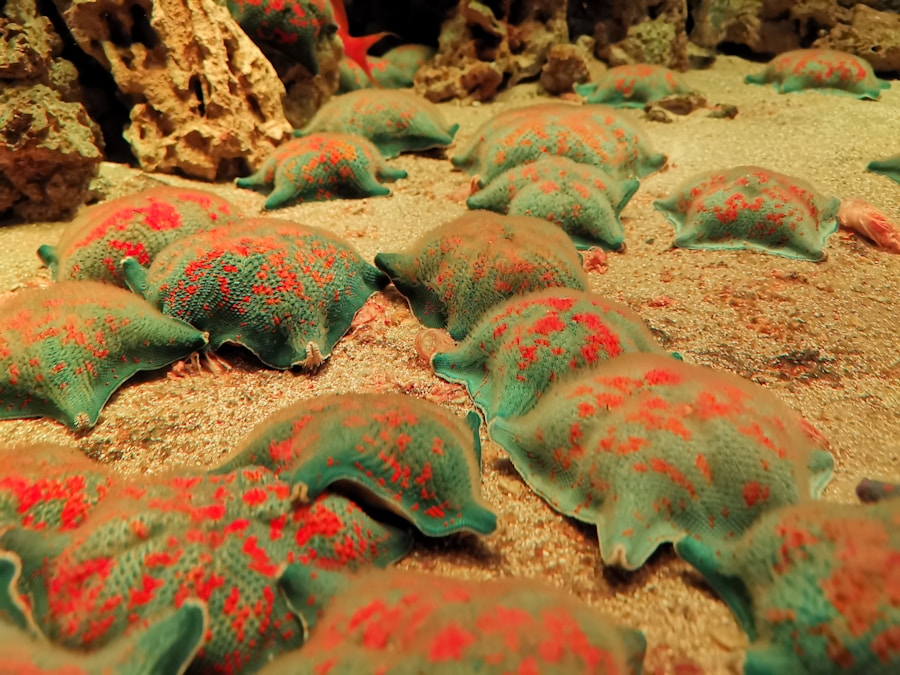As I delve into the captivating realm of coral roots, I find myself mesmerized by their intricate structures and the vital roles they play in marine ecosystems. Coral roots, often overlooked in discussions about marine life, are essential components of coral reefs. These roots, which extend from the coral polyps, serve as anchors that stabilize the coral and provide a foundation for the entire reef system.
The beauty of coral roots lies not only in their physical form but also in their complex interactions with the surrounding environment. They are a testament to nature’s ingenuity, showcasing how life adapts to thrive in diverse conditions. The diversity of coral roots is astounding.
They can vary significantly in shape, size, and function depending on the species of coral and the specific environmental conditions they inhabit. Some coral roots are thin and delicate, while others are robust and thick, designed to withstand strong currents and waves. As I explore different coral reefs around the world, I am continually amazed by how these roots contribute to the overall health and resilience of the reef ecosystem.
They provide essential nutrients to the coral polyps and create habitats for various marine organisms, making them a cornerstone of underwater biodiversity.
Key Takeaways
- Coral roots play a crucial role in the health and stability of marine ecosystems
- Coral roots have unique adaptations that allow them to thrive in challenging environments
- Coral roots are essential for the formation and maintenance of coral reefs
- Studying coral roots presents numerous challenges due to their delicate nature and remote habitats
- Continued research and conservation efforts are necessary to protect and preserve coral roots for future generations
The Importance of Coral Roots in Marine Ecosystems
The Web of Life
The intricate web of life that thrives around coral roots highlights their significance in fostering biodiversity. Moreover, coral roots play a critical role in nutrient cycling within marine ecosystems. They facilitate the exchange of nutrients between the coral and its environment, ensuring that both the coral and its associated organisms have access to essential resources.
Nutrient Cycling and Reef Health
This nutrient exchange is vital for the growth and health of the entire reef system. As I study these interactions, I am struck by how interconnected life is beneath the waves. The health of coral roots directly impacts the overall health of the reef, making their preservation essential for sustaining marine biodiversity.
Interconnectedness and Preservation
The delicate balance of marine ecosystems relies heavily on the health of coral roots. It is essential that we take action to preserve these vital structures, not just for the coral itself, but for the countless species that call the reef home. By protecting coral roots, we can help maintain the rich biodiversity of our oceans and ensure a healthy, thriving ecosystem for generations to come.
The Unique Adaptations of Coral Roots

The unique adaptations of coral roots are a fascinating aspect of their biology that I find particularly intriguing. These adaptations have evolved over millions of years, allowing coral roots to thrive in various marine environments. For instance, some coral species have developed specialized root structures that can absorb nutrients directly from the water column, while others have adapted to extract nutrients from sediment.
This versatility enables them to survive in different conditions, from nutrient-rich waters to more challenging environments where resources are scarce. Additionally, the symbiotic relationships that coral roots form with other marine organisms further enhance their adaptability. For example, certain types of algae live within the tissues of coral roots, providing them with energy through photosynthesis.
In return, the coral roots offer protection and access to sunlight. This mutualistic relationship exemplifies how life in marine ecosystems is interdependent and how adaptations can lead to thriving communities. As I explore these relationships, I gain a deeper appreciation for the complexity of life beneath the surface and the remarkable ways in which organisms have evolved to coexist.
The Role of Coral Roots in Coral Reef Formation
| Metrics | Data |
|---|---|
| Number of coral species with roots | Over 8000 |
| Percentage of coral reefs formed by coral roots | Up to 90% |
| Depth at which coral roots can grow | Up to 450 feet |
| Rate of sediment retention by coral roots | Up to 90% |
| Contribution of coral roots to marine biodiversity | Supports over 25% of all marine species |
Coral roots are integral to the formation and maintenance of coral reefs, which are often referred to as the “rainforests of the sea.” As I observe the growth patterns of various coral species, it becomes evident that their roots play a pivotal role in building these vibrant ecosystems. The roots help secure corals to the substrate, allowing them to grow vertically and horizontally, which contributes to the overall structure of the reef. This structural integrity is essential for creating habitats that support diverse marine life.
Furthermore, as coral reefs grow and expand, they provide shelter and breeding grounds for numerous fish species and other marine organisms. The intricate architecture formed by coral roots creates nooks and crannies where smaller creatures can hide from predators while also serving as nurseries for juvenile fish. This dynamic interplay between coral roots and marine life underscores their importance in fostering biodiversity within reef ecosystems.
As I witness this thriving community firsthand, I am reminded of how vital it is to protect these natural wonders for future generations.
The Challenges of Studying Coral Roots
Despite their significance, studying coral roots presents numerous challenges that researchers must navigate. One major obstacle is the difficulty in accessing these underwater structures. Coral reefs are often located in remote areas that require specialized equipment and training to explore safely.
As I embark on my own research expeditions, I am acutely aware of the logistical hurdles involved in studying these delicate ecosystems. The need for advanced technology and skilled divers can limit the scope of research conducted on coral roots. Additionally, the dynamic nature of marine environments poses another challenge for researchers.
Coral reefs are constantly changing due to factors such as water temperature fluctuations, ocean acidification, and human activities like pollution and overfishing. These changes can impact the health of coral roots and make it difficult to establish long-term studies that accurately reflect their ecological roles. As I grapple with these challenges in my research, I am reminded of the importance of collaboration among scientists, conservationists, and local communities to address these issues effectively.
The Future of Coral Root Research

Advances in Technology
Advances in technology, such as underwater drones and remote sensing tools, are revolutionizing our ability to study these structures in greater detail than ever before.
Interdisciplinary Approaches
Interdisciplinary approaches that combine marine biology with fields like genetics and climate science are paving the way for a more comprehensive understanding of coral roots and their responses to environmental changes. By integrating knowledge from various disciplines, we can develop more effective conservation strategies aimed at protecting these vital ecosystems.
A Bright Future Ahead
As I engage with fellow researchers and conservationists, I am filled with hope that our collective efforts will lead to meaningful advancements in our understanding of coral roots and their critical roles in marine ecosystems.
Conservation Efforts for Coral Roots
Conservation efforts aimed at protecting coral roots are essential for ensuring the long-term health of coral reefs. Various organizations and initiatives are working tirelessly to raise awareness about the importance of these structures and advocate for policies that promote their preservation. As I participate in conservation programs focused on coral reefs, I witness firsthand the dedication of individuals committed to safeguarding these ecosystems for future generations.
One effective approach to conservation is habitat restoration, which involves replanting corals and enhancing their growth conditions. By restoring damaged areas of reefs, we can help bolster populations of healthy coral roots that support diverse marine life. Additionally, community engagement plays a crucial role in conservation efforts.
Educating local communities about the significance of coral reefs fosters a sense of stewardship that encourages sustainable practices and reduces human impact on these fragile ecosystems.
How You Can Help Protect Coral Roots
As individuals, we all have a role to play in protecting coral roots and ensuring the health of our oceans. Simple actions can make a significant difference in promoting awareness about these vital structures. For instance, reducing plastic consumption and participating in beach clean-ups can help minimize pollution that threatens marine ecosystems.
By advocating for sustainable fishing practices and supporting organizations dedicated to marine conservation, we can contribute to preserving coral reefs and their associated habitats. Moreover, educating ourselves and others about the importance of coral roots is crucial for fostering a culture of conservation. Sharing information through social media or community events can inspire others to take action and become advocates for marine protection.
As I reflect on my own journey in understanding coral roots, I am reminded that every effort counts—no matter how small—and together we can make a positive impact on our oceans and ensure that future generations inherit a thriving marine environment rich with biodiversity.
If you’re interested in learning more about the behind the scenes of Coral Roots, be sure to check out this insightful article on privacy policy. This article delves into the importance of protecting user data and ensuring transparency in online operations, which are crucial aspects of running a successful online business like Coral Roots. Understanding the privacy policy of a company can provide valuable insights into their values and commitment to customer trust.
FAQs
What is Coral Roots?
Coral Roots is a sustainable fashion brand that focuses on creating eco-friendly and ethically made clothing and accessories.
What is the article “Behind the Scenes of Coral Roots” about?
The article “Behind the Scenes of Coral Roots” provides an in-depth look at the production process, materials used, and the ethical practices of Coral Roots.
What are some of the sustainable practices of Coral Roots?
Coral Roots uses eco-friendly materials such as organic cotton, recycled polyester, and Tencel. They also prioritize ethical manufacturing processes and fair labor practices.
How does Coral Roots ensure ethical production?
Coral Roots works with certified factories that adhere to strict labor and environmental standards. They also prioritize transparency and traceability throughout their supply chain.
What sets Coral Roots apart from other fashion brands?
Coral Roots stands out for its commitment to sustainability, ethical production, and transparency. They prioritize quality over quantity and aim to create timeless pieces that have a minimal impact on the environment.



